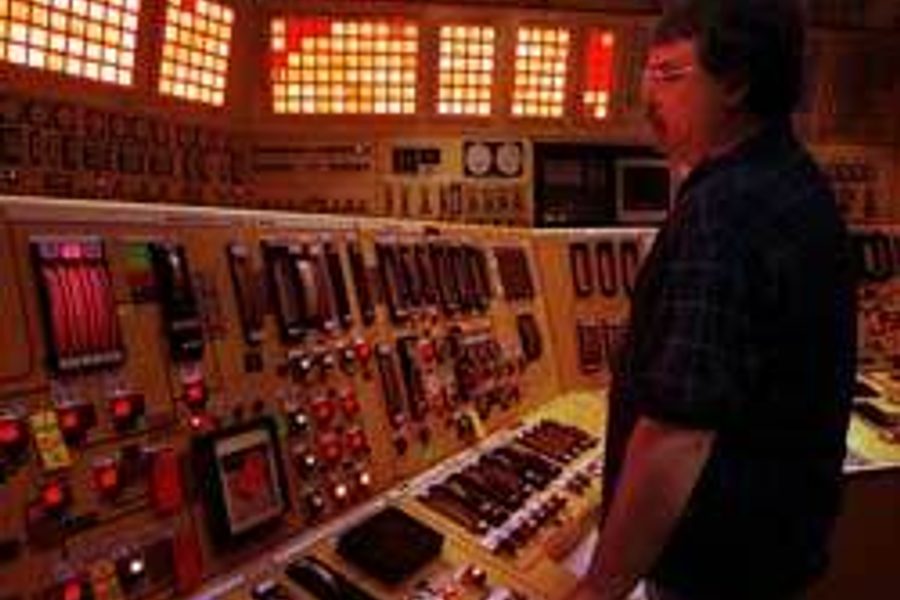
President Bush has always been a good friend to the nuclear industry, but his recent overtures should sound alarm bells.
The White House has begun pushing to replace governmental safety standards at federal nuclear facilities with requirements penned by contractors. As Rep. Ted Strickland (D-Ohio) quipped, “It’s like the fox guarding the hen house.”
What prompted the Bush administration’s move? Congress insisted the government start fining contractors for violations.
The proposed weakening of safety standards would affect more than 100,000 nuclear plant workers and comes at an especially lousy time to lower their morale.
A strike by 276 operations and maintenance workers was narrowly averted in January at the Indian Point 3 plant, 35 miles north of midtown Manhattan. When the plant’s owner proposed substituting managers for striking workers, union spokesman Steve Mangione observed, “Anyone would want the people who work there every day — not managers who take a crash course — to be the ones running the plant.”
Happy, well-trainded workers are key to nuclear safety: When problems occur, they often result from worker error. The Nuclear Regulatory Commission (NRC) reported 728 worker-caused mishaps during a recent two-year period, an average of more than three mistakes per year at each plant.
Even worse, government security contractors have apparently been lax in monitoring worker effectiveness. The Y-12 nuclear weapons plant in Tennessee, for example, made headlines recently when it reported missing 200 keys to protected areas. Then news surfaced that security personnel guarding the nation’s nuclear stockpiles, including tons of enriched uranium at the Y-12 nuclear weapons plant in Oak Ridge, Tenn., had been cheating on their antiterrorism drills.
An Energy Department investigation discovered that contract security guards at the Y-12 plant had been given access to computer models of antiterrorism drill strikes in advance, rendering the tests useless. A representative from Wackenhut, the longtime government contractor charged with securing the facility, claimed security at Y-12 was “better than it’s ever been” but few are convinced. A January 2002 study found only 19 percent of Wackenhut guards at Indian Point reported feeling able to “adequately defend the plant.”
Almost 25 years ago, the reactor core meltdown at Three Mile Island struck fear into the nation, but consequences could have been much worse. A 1982 study by the Sandia National Laboratory predicted an accident at the Limerick nuclear plant outside Philadelphia could result in 74,000 people killed within the first year and a further 610,000 afflicted with radiation-related illnesses. Add to that $200 billion in relocation and clean-up costs.
By all appearances, however, stateside nuclear facilities are functioning well. Pennsylvania’s Susquehanna nuclear plant just announced an electricity-generation record for 2003, which it attributes to “maintaining the highest safety and reliability standards,” and Maryland’s Calvert Cliffs Nuclear Power Plant (CCNPP) is hard at work assuring the public it’s a friendly neighbor; the CCNPP Web site includes references to its “forest management and wildlife protection.”
But the CCNPP site also lists protective measures to be taken in case of an accident, such as “put uncovered food into the refrigerator” and “washing yourself and your clothes removes radioactive material you may have picked up.”
How effective these steps would be in a meltdown is debatable — perhaps similar to clasping seatbelts tight when an airplane is nose-diving. One factor is clear: CCNPP’s location (60 miles from Baltimore and 50 miles from Washington, D.C.) might make it a target for terror. Other reactors across the country could be similarly at risk.
Regardless, the Bush administration has been pumping money into the nuclear industry, including a fresh $35 million infusion last year to build 50 new U.S. reactors by 2020. Given each reactor costs more than $1.5 billion to produce, and the public assumes liability in case of an accident or attack, U.S. taxpayers should be forewarned.
The White House also is leaning on the Environmental Protection Agency (EPA) to weaken regulations regarding nuclear waste transport and storage.
How ironic that alternative energy sources receive relatively little in government subsidies, especially in light of new satellite mapping techniques showing that the Great Plains region could generate three times as much energy in wind-power as the United States consumes.
What then explains our government’s obsession with nuclear power?
Follow the money. Nuclear plant PACs invested hundreds of thousands of dollars in the Bush-Cheney presidential campaign, and almost half a million dollars in the 23 members of the Senate Energy and Natural Resources Committee in 2002 alone.
That’s no excuse for poor energy policy. The risks of nuclear plants must be considered before dumping any more money into this losing game. And as long as the nation’s 100-plus nuclear plants continue to operate, the toughest of safety standards must be enforced.





